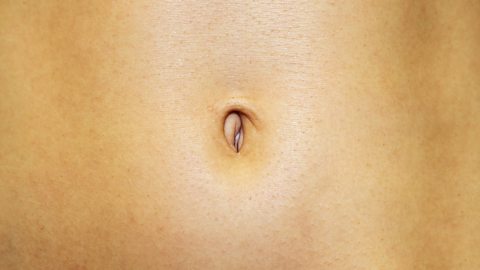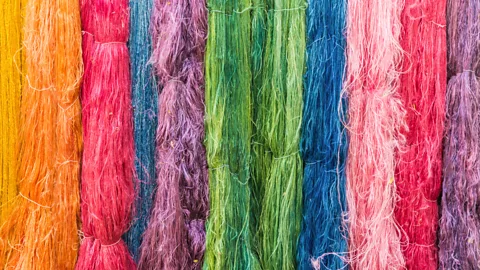The curious truth about belly button fluff

 Getty Images
Getty Images
Some people have belly buttons devoid of fluff – while others must clean lint out of theirs every day. Jason G Goldman discovers why the fuzz is strong with some…
There are two crucial things you need to know about the lint that forms inside of belly buttons. The first is that it's referred to more scientifically as "navel fluff," though occasionally those writing about in scientific literature call it belly button lint (BBL). The second is that navel fluff forms more often in middle-aged, hairy men, especially ones who have recently put on weight.
These are the findings of a University of Sydney researcher named Karl Kruszelnicki. Dr Karl, as his fans know him, has an Australian science radio show, and one of his listeners wrote in asking where navel fluff comes from and how it forms. That inspired Kruszelnicki to distribute a survey online, which led him to the conclusion that BBL is an affliction mainly of middle-aged men with sufficient body hair. For his research, Kruszelnicki received an Ig Nobel Prize in 2002, an accolade given for research that "first makes you laugh, and then makes you think.”
 Getty Images
Getty Images
In addition to the online survey, Kruszelnicki and his colleagues collected samples from willing volunteers and also asked some to shave the hair from around their belly buttons. It turned out that shaving belly hair indeed prevented the accumulation of lint. While perhaps not the world's leading experts on the topic, Dr Karl and his colleagues arrived at an explanation for the formation of navel fluff that, at least, makes intuitive sense. Hairs around the belly button, they think, operate as a "one-way ratchet mechanism", stealing tiny fibres from inside your clothes and depositing them into your navel.
Older clothes, less lint
Kruszelnicki wasn't the only person to take a stab at what forms the fluff that fills belly buttons around the world. In 2009, a Vienna University of Technology researcher named Georg Steinhauser published his hypothesis in the eyebrow-raising journal Medical Hypotheses. For reasons known only to himself, Steinhauser collected his own navel fluff each evening for three years. Though he insists that he maintains good personal hygiene, including a shower each morning, his navel invariably becomes filled with fluff by the day's end. In all Steinhauser collected 503 samples from his own belly button. Their combined weight didn't even reach a single gram. On average, a single piece had a mass of 1.82 milligrams, though seven pieces were more than 7.2 milligrams, and the winner was a true belly button behemoth, weighing a whopping 9.17 milligrams.
"It was obvious that the fuzz resulted from the collection of cotton fibres," Steinhauser wrote, "because the lint had the same colour as the respective shirt." He collected less lint when he wore old t-shirts, presumably because they'd already been picked clean of stray fibres, and when he wore button-down dress shirts.
Steinhauser would eventually reach the same conclusion as Kruszelnicki: that hair surrounding the navel was the lint-collection culprit. He reasoned that the hair itself scrapes tiny fibres off of a shirt, and then directs the lint towards the navel where it accumulates. "The hairs' scales act like a kind of 'barbed hooks'," he said. He, too, once shaved the hair surrounding his own belly button. As with Dr Karl's participants, he found that was sufficient to halt lint accumulation within his navel.
 Getty Images
Getty Images
But Steinhauser took his research one step further. He analysed the chemical composition of a BBL sample that he collected after wearing a plain white 100% cotton t-shirt. If his navel fluff were made solely of fibres from his t-shirt, then the analysis would reveal that the lint was made entirely of cellulose. What he found, however, was that other debris became folded into navel lint as well. Based on the chemical readout, Steinhauser suspects that the remaining matter is made of house dust, flakes of skin, fat, proteins, and sweat. Stomach hairs, it seems, do not discriminate. Based on this, he reasoned that those whose navels accumulate fluff might have generally cleaner and more hygienic belly buttons, because the removal of lint takes everything else along for the ride.
While only a scant few researchers have committed their time and energy to exploring the ontogeny of navel fluff – perhaps Kruszelnicki and Steinhauser are the only ones – there is a serious research effort underway at North Carolina State University to understand what else lives in our belly buttons. Rob Dunn, a researcher in the Department of Biology and the Keck Center for Behavioral Biology at NCSU, established a citizen science project called the "Belly Button Diversity Project".
In 2011, Dunn and his colleagues collected samples from more than 500 volunteers at the 2011 Science Online conference in Raleigh, North Carolina, and at the Darwin Day event at Raleigh's Museum of Natural Sciences. But the researchers weren't all that interested in the lint. Instead, they wanted to understand the belly button microbiome. "The belly button is one of the habitats closest to us, and yet it remains relatively unexplored," they wrote. So they set out to find out what bacteria live inside of our navels.
Beginning with that initial study (there has since been a second round of sampling), Dunn and his team have discovered tremendous microbiological diversity hiding in belly buttons, a veritable treasure trove of microscopic lifeforms.
Navel adaptation
In the 60 samples they first assessed, they counted at least 2,368 species and suspect that figure is likely an underestimate. To put that into context, that's more than twice the biodiversity of North American birds or ants. But most of those species were rare: 2,128 of them were present in the navels of fewer than six people. In fact, most were only seen on a single individual. Despite the staggering diversity, the vast majority of bacteria found in human navels come from but a handful of species. While there was no one species common to every individual, eight species were present on at least 70% of participants. Together, those eight species accounted for almost half of all bacteria found.
The researchers also found three species of archaea, a type typically found only in extreme environments. Interestingly, two of the three came from a single individual who said he hadn't taken a shower or bath for several years.
 Getty Images
Getty Images
Why so much belly button biodiversity? Dunn and his team suspect that the cluster of common species have adapted to life on human skin – or perhaps even in the navel itself – while others are only occasional visitors to the belly button’s distant shores.
They draw an analogy to fish within an estuary. The permanent residents have adapted to the estuarine habitat, while other species that may briefly show up just aren't equipped to take up long-term residence. Likewise, a disproportionate number of trees in any given rainforest are uniquely adapted to the tropics. Others may be able to grow in rainforest soil, but they can't establish a strong community.
While the sheer diversity makes it impossible to predict which types of bacteria might be found inside any individual human's belly button, what the researchers can do is predict which species are most frequent and which are rarer.
So if your belly button doesn't routinely snag lint to form a ball of fuzzy fluff, fret not: your navel is still an exciting place. Truly, it teems with life.
